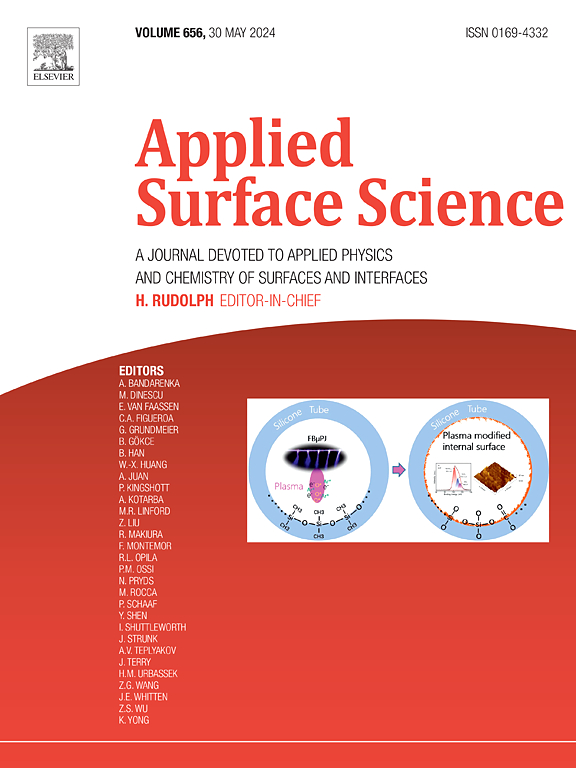High-performance Al2O3 sol–gel films: Improving solar cell efficiency through antireflective and superhydrophobic properties
IF 6.3
2区 材料科学
Q2 CHEMISTRY, PHYSICAL
引用次数: 0
Abstract
This study developed a multifunctional aluminum oxide

高性能Al2O3溶胶-凝胶膜:通过抗反射和超疏水性能提高太阳能电池效率
本研究开发了一种结合抗反射和超疏水特性的多功能氧化铝膜,用于增强户外应用中的光伏(PV)性能。该薄膜采用溶胶-凝胶、浸渍涂层和可控蚀刻工艺在玻璃基板上形成,从而形成具有草状纳米结构的多孔表面。经过512 s的刻蚀,薄膜的粗糙度为23.63 nm,在550 nm处的折射率为1.14。在350-1500 nm光谱范围内,平均透射率为96.86%,反射率为3.07%,在480 nm处透射率达到99.30%。该薄膜在45°角度下保持90%以上的透光率,为太阳能电池板提供了至关重要的全方位功能。其超疏水性(162.3°水接触角和7.5°滞后)确保自清洁。应用于太阳能电池盖板玻璃涂层时,提高了短路电流密度和功率转换效率。在60°入射角下,效率提高了19.19%,这表明该薄膜具有显著改善PV性能的潜力。
本文章由计算机程序翻译,如有差异,请以英文原文为准。
求助全文
约1分钟内获得全文
求助全文
来源期刊

Applied Surface Science
工程技术-材料科学:膜
CiteScore
12.50
自引率
7.50%
发文量
3393
审稿时长
67 days
期刊介绍:
Applied Surface Science covers topics contributing to a better understanding of surfaces, interfaces, nanostructures and their applications. The journal is concerned with scientific research on the atomic and molecular level of material properties determined with specific surface analytical techniques and/or computational methods, as well as the processing of such structures.
 求助内容:
求助内容: 应助结果提醒方式:
应助结果提醒方式:


